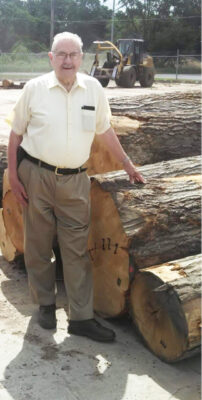Northeast Business Trends – April 2025
Northeastern Lumber Representatives Report A Rise
In Market Performance And Tariff Preparations
Issues with a variety of inclement weather has slowed down operations in the Northeast; however, lumber representatives remain positive due to the increase in customer foot traffic. Causes listed for this increase include the end of the election, an increase in demand for Red Oak and Poplar and bracing for tariffs.
“Fair and steady” is what a lumber source in New York rated the market in his area. He attributed this to the “changing of the seasons.” It is the same as six months ago and is “really just on status quo here,” he said.
They handle 4/4 through 8/4 and No. 2 Common and Better in Red and White Oak. Red Oak is performing the best.
They export their products and ship domestically. He said his customers have been “pretty hush-hush. There’s a blanket tariff going around everywhere causing people to have a ‘buy it now’ and ‘wait and see’ mindset.”
At his company, they are just “staying conscious of the tariffs by listening to what everybody else is doing right now. I don’t know if they are more likely to help or hurt the lumber industry because the last ones did not fare well but it’s kind of hard to say. It all depends on how long it lasts. It kind of seems like people are preparing for a worst-case scenario.”
While he has heard that other people are having trouble with labor, he said it “doesn’t seem like a driving factor right now.” He named the “increase in timber prices” to be what is “really hurting the industry.”
In Pennsylvania, a lumber representative commented that the demand is “probably there but I think the product is not there because the public is not buying the products. Business is coming back a little bit; we’re starting to get more customer base after the election.” The market has improved compared to six months ago.
They handle “all the Northwestern Pennsylvania species” including Ash, Cherry, Hard Maple, Beech, Birch and Red and White Oak in “all the grades we can until we get to the breaking point, where the blocking is worth more than the lumber, then we have to stop sawing.” They sell around five million board feet a year but were “down a little bit” last year.
In addition to selling blocks, three-sided logs, railroad ties and veneer, they deal with around 50 to 60 different customers but don’t export directly, as they have customers in the United States who ship their products internationally.
He believes that while the tariffs will hurt a “little bit, I think in the long run, they’ll benefit us.”
Labor is “very intense and there is a lot of competition for it,” he added. He also observed that about “30 to 40 percent of the sawmills in Pennsylvania shut down, as they had no logs because landowners weren’t selling. A lot of the big ones shut down, too. Without those bigger companies producing, it has helped us in the long run.”
In West Virginia, it is “not too bad” for Poplar and White Oak but “everything else stinks,” according to a lumber source in that area. The market is performing better than six months ago.
Despite this improvement, he said there can be “too much inertia the wrong way” because “it goes up five dollars every thousand and when it goes down, it drops 50 or 100 dollars at a time.”
They offer Hard and Soft Maple, Cherry, Basswood, Poplar and Red and White Oak in “No. 3 Common and Better and a little bit of the thicker stock now because we’ve got a new customer in the area that buys that,” he explained. He added that when the furniture companies “left for Asia, they cut all the thick stock over there because it’s worth more money.” The business for Poplar is “pretty good” because it is “worth more than Cherry and if somebody would have told anybody in the hardwood business that five or 10 years ago, they would have laughed but that is the reality today because Cherry is out of style and white woods are in style.”
His customers are flooring and pallet companies.
He mentioned the “labor situation has been unfortunate but in the last few months, we have been able to hire some people; however, we have been running short-handed for the last couple of years. I spend half my time in the mill on the production line because we’re running at 60 percent capacity because that’s all the people we had. There is no point in running wide open if things are bad and just giving away 30 percent of production.”
They used to ship lumber to Canada but now they had a “Canadian company move into West Virginia so we’re dealing with them here directly.” He believes that the situation will improve because there are “fewer of us left. Right now, log supply is tight because we’ve had more winter this year than probably in the last 10 years. All of the loggers were deer hunting and that was the last of the good weather so about the time hunting season was over and they wanted to go back to work, there have been blizzards, floods or mud up to our rears.”







